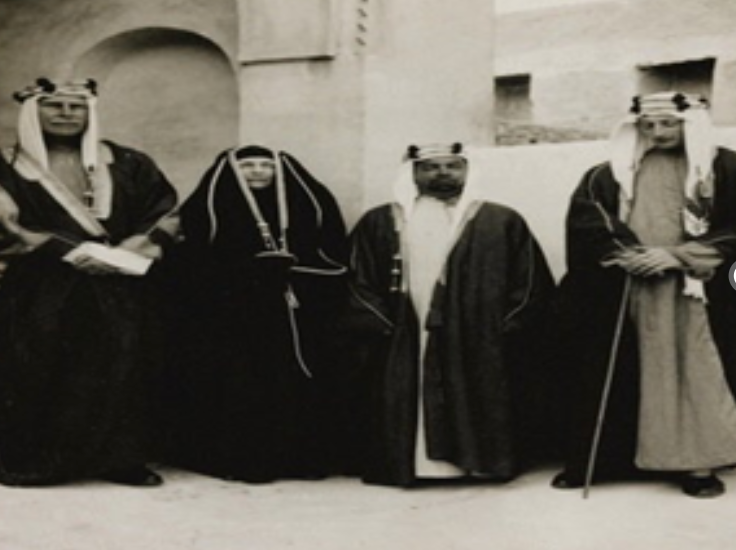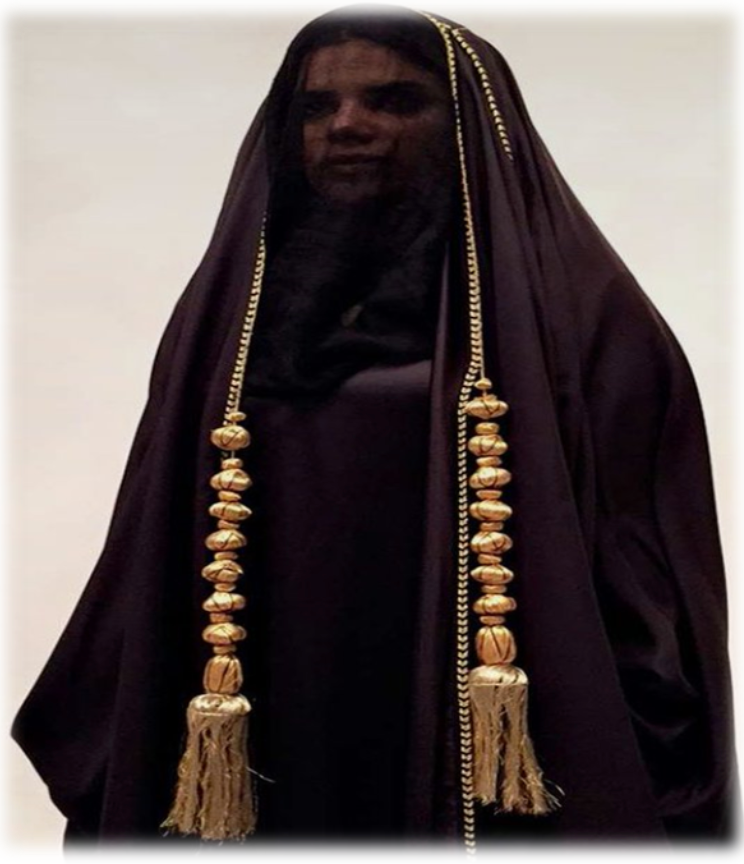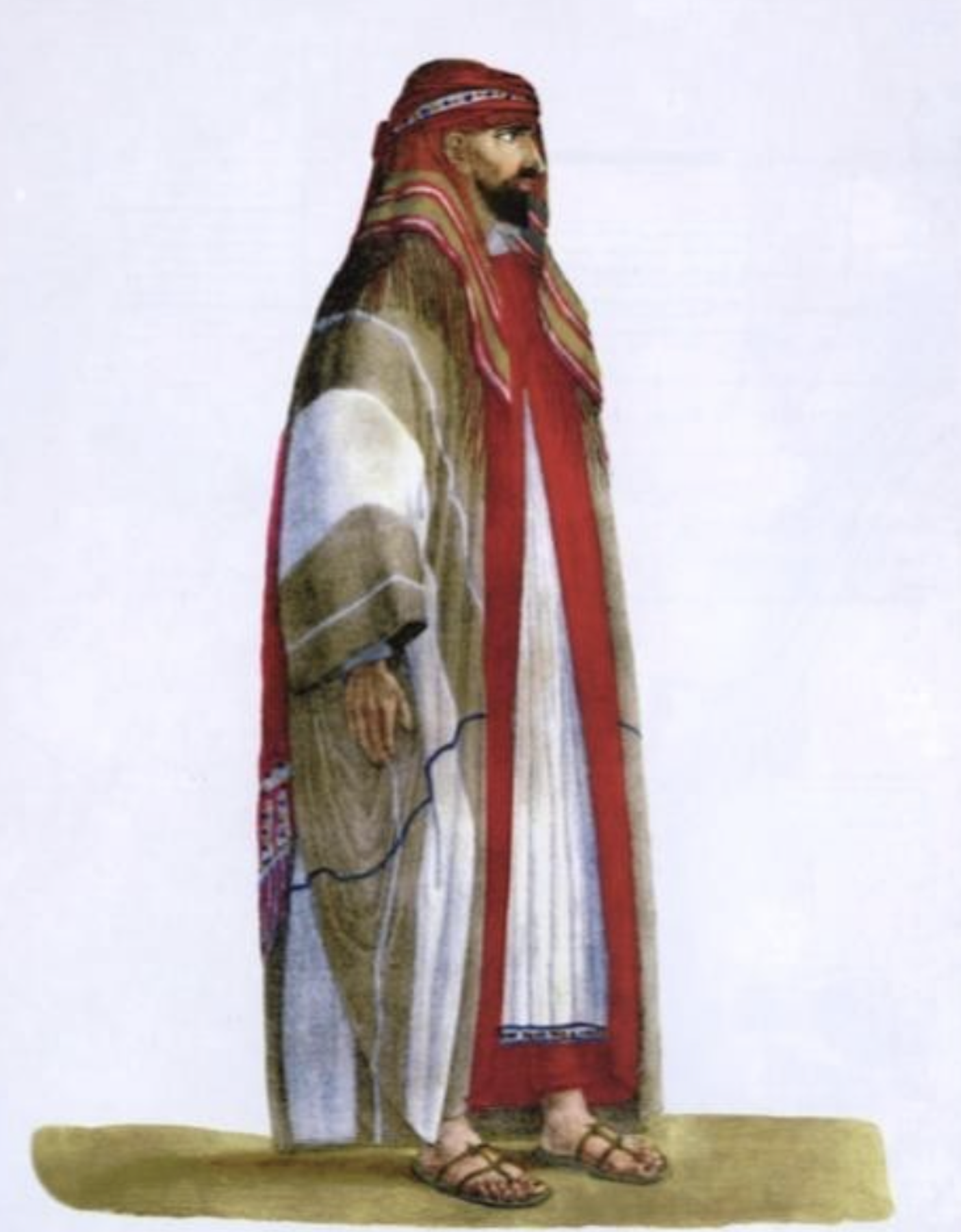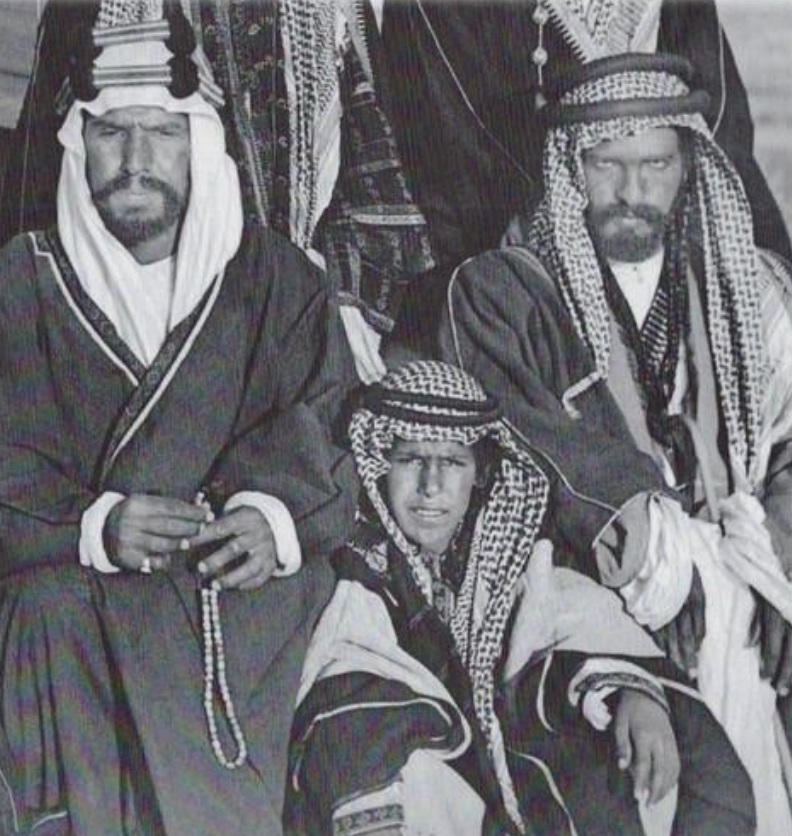RIYADH: When the First Saudi State was established, traditional attire had several distinctive characteristics, some of which have remained over time while others have vanished.
What is certain is that on Feb. 22, also known as Founding Day or the Day of the Beginning, Saudi Arabia’s traditional clothing from that era is returning to popularity.
Every region of the Kingdom has its distinctive traditional clothing, and in the Diriyah region, bisht Al-Barqa and Al-Moassamah were two of the most widely worn outfits.

British Princess Alice, Countess of Athlone, wears Al-Moassamah abaya. (Supplied)
Bisht Al-Barqa is one of the most prominent traditional men’s costumes in Diriyah, a hand-woven garment made of goat's wool that is open from the front, the sleeves appearing long and wide, either in black or brown and separated by a thin white line.
It was worn during the time of the First Saudi State and by succeeding generations. Saudi royal family rulers, princes and their sons have worn it and continue to do so.
“Bisht Al-Barqa is one of the types of bishts, or cloaks, and it was used by men in the region. The people of the central region, Al-Aridh and Diriyah used to call the abaya a bisht, whether a man or a woman wore it,” Laila Al-Bassam, a heritage and traditional Arab costumes and textiles expert, told Arab News.

The Al-Moassamah abaya is made of sheep’s wool and decorated with zari (buttons) and ama’iI (braids). (Supplied)
According to Al-Bassam, the central region was free from outside influences so the traditional dress was particular to the area.
“It did not have any outside influence. (Just) look at the outside influence in the coastal areas, the areas where pilgrims, and many came from abroad,” she said. “But, still, in the central region, the Diriyah region and Al-Aridh region, the clothes were localized.”
The primary lines are the same for the abaya or bisht for women and men, but the women’s bisht has embroidery on the shoulders, called “Al-Moassamah.”
The Al-Moassamah abaya is made of sheep’s wool and decorated with zari (buttons) and ama’iI (braids). It surrounds the head and shoulders, hanging from the front two sides, and each side is made of circles and ends with button threads without braids (kshakeesh).

Imam Abdullah bin Saud, the fourth Imam of the first Saudi State wears a bisht Al-Barqa. (Supplied)
The moassamah method embellishes the abaya, and black silk threads are woven or formed into cords or braids. It is made by placing a thin rope around the hand hole, the shoulder line and the front hole line. Gold button threads have also been used.
“The woman differed from the man in that she wore the abaya on the head until it reached the ground and had holes on the sides where the wearer could pass a hand through, the man wore it on the shoulders,” Al-Bassam said.
Princess Noura bint Abdulrahman Al-Saud wore the Al-Moassamah abaya and employed women who were paid for their sewing; most of them were from the Al-Kharj, Wadi Al-Dawasser and Al-Aflaj, and were known for their expertise in decoration.
Princess Noura designed the abayas. Her designs were modest but had dignity and her choice of decorations were highly valued.

Prince Turki Alawwal bin Abdulaziz bin Abdulrahman Al-Saud wears a bisht Al-Barqa. (Supplied)
Al-Bassam said Founding Day activities and learning about the history and heritage of traditional clothes should be taught to future generations.
“Traditional fashion is an identity that binds us to our roots and our land, and we cherish it. When we wear it, we feel this pride and patriotism. When I watch fashion events, I enjoy watching young people who are dressed in traditional attire. They rejoice in it,” she said.
“They can sense these garments’ beauty. Then, when they don their ordinary clothing again, they notice the difference. When it comes to holidays and national days, they search for these items and dress in them. This is a crucial element that links the present with the past and gives us a sense of belonging.
“We need to start educating these generations early. These costumes must be included in the curricula. The next generation should be taught about traditional national clothes early.”


































